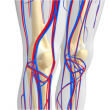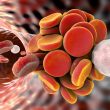At present, the transfemoral access (TFA) is the preferred approach when it comes to transcatheter aortic valve replacement (TAVR). However, 5 to10% of PAD patients present tortuous iliac anatomy and calcification, aortic aneurysms or prior peripheral intervention, which makes it impossible. There are several alternatives to approach these patients: 1) TFA associated to peripheral PCI...
Discrepancy between Angina and Ischemia Repeats in Peripheral Artery Disease
Three randomized studies showed exercising significantly improves 6-minute walk outcomes in patients with peripheral artery disease (PAD). However, many participants randomized to exercise did not perceive changes, and sometimes even got worse. These findings suggest a significant discrepancy between objective and perceived change in walking ability among PAD patients. 400 patients with peripheral artery disease...
Peripheral Artery Disease: Underestimated and Undertreated
Compared against coronary artery disease (CAD) or cerebrovascular disease patients, peripheral artery disease (PAD) patients have lower chances of receiving medication proved to be clinically effective such as statins (despite running the same risk, perhaps even higher risk). The message is we should be more active both in finding risk factors in PAD patients, and...
Felling Reassured with Paclitaxel Coated Devices in Peripheral Artery Disease
This big analysis shows rapid absorption of paclitaxel coated devices for PCI in femoropopliteal territory, which reassures us about its alleged association to increased mortality. In fact, survival, amputation-free survival and cardiovascular events rate resulted better with paclitaxel coated devices in the treatment of chronic limb ischemia. This study emphasizes the difference that might exist...
The Real Impact of Peripheral Artery Disease in TAVR
Courtesy of Dr. Carlos Fava. The real incidence of peripheral artery (PAD) disease in TAVR remains unclear. Different reports still estimate it is between 10 and 46%, but they have shown it has a negative impact in evolution. 51,685 TAVR patients were analyzed. 12,740 of these patients presented PAD (24.6%). PAD patients tended to be...
Exercise Programs in Peripheral Artery Disease
Programmed exercises are recommended as initial management strategy for patients with peripheral artery disease (PAD). Most exercise programs include supervised treadmill walking twice or three times a week in a strategic facility (such as a gym). PAD patients often give up on these programs seeing as they might find it difficult to keep to a...
HIV and Peripheral Artery Disease: Acknowledging the Association
The role of human immunodeficiency virus (HIV) in the development of vascular disease (specifically peripheral artery disease) remains unclear. Is the virus per se the direct cause of this disease or is it a consequence of dyslipidemia, one of the adverse effects of antiretrovirals? This study looked into the effect of HIV infection on peripheral...
Risk of Thrombosis and Bleeding with Peripheral Artery Disease and Concomitants
Peripheral artery disease (PAD) is no longer a systemic manifestation of atherosclerosis. In fact, 2 in 3 people with PAD have concomitant heart disease, and 1 in 3 people has concomitant PAD. To understand the real dimension of this problem, we should know that PAD patients have 60% more risk of acute myocardial infarction...
Peripheral artery disease associated to ischemic and bleeding events after DES implantation
Patients with peripheral artery disease (PAD) have higher rates of cardiovascular events after DES implantation, which could be explained partly by higher platelet reactivity. The present work studies the relationship between platelet reactivity and clinical events after PCI in patients with and without a history of peripheral artery disease. The ADAPT-DES study (Assessment of...
Does Ticagrelor Reduce Events in Peripheral Artery Disease?
Original Title: Ticagrelor for Prevention of Ischemic Events after Myocardial Infarction in Patients with Peripheral Artery Disease. Reference: Marc P. Bonaca et al. J Am Coll Cardiol. 2016 Jun 14;67(23):2719-28. Peripheral artery disease is associated with high rates of ischemic and bleeding events in patients with prior myocardial infarction. This study evaluates the safety...








